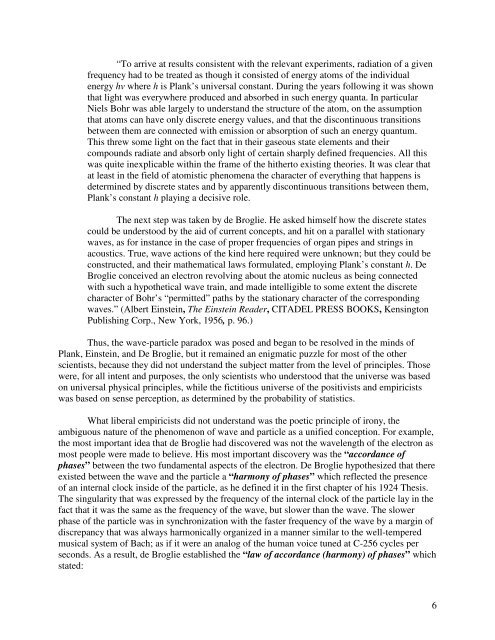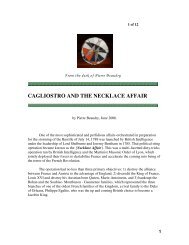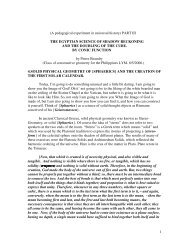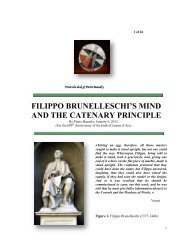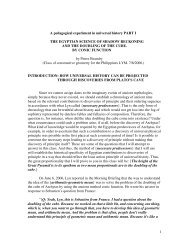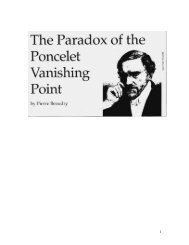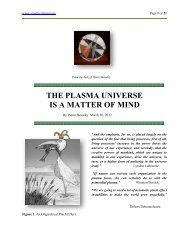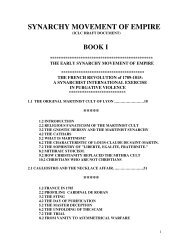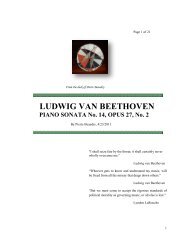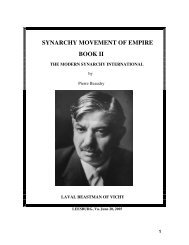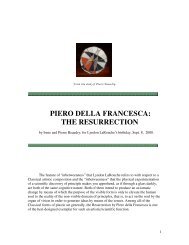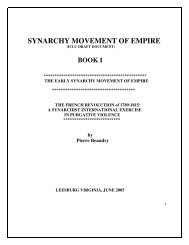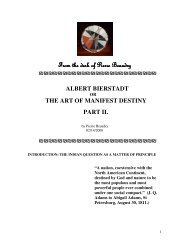LOUIS DE BROGLIE : THE WAVE AND PARTICLE PARADOX
LOUIS DE BROGLIE : THE WAVE AND PARTICLE PARADOX
LOUIS DE BROGLIE : THE WAVE AND PARTICLE PARADOX
You also want an ePaper? Increase the reach of your titles
YUMPU automatically turns print PDFs into web optimized ePapers that Google loves.
“To arrive at results consistent with the relevant experiments, radiation of a givenfrequency had to be treated as though it consisted of energy atoms of the individualenergy hv where h is Plank’s universal constant. During the years following it was shownthat light was everywhere produced and absorbed in such energy quanta. In particularNiels Bohr was able largely to understand the structure of the atom, on the assumptionthat atoms can have only discrete energy values, and that the discontinuous transitionsbetween them are connected with emission or absorption of such an energy quantum.This threw some light on the fact that in their gaseous state elements and theircompounds radiate and absorb only light of certain sharply defined frequencies. All thiswas quite inexplicable within the frame of the hitherto existing theories. It was clear thatat least in the field of atomistic phenomena the character of everything that happens isdetermined by discrete states and by apparently discontinuous transitions between them,Plank’s constant h playing a decisive role.The next step was taken by de Broglie. He asked himself how the discrete statescould be understood by the aid of current concepts, and hit on a parallel with stationarywaves, as for instance in the case of proper frequencies of organ pipes and strings inacoustics. True, wave actions of the kind here required were unknown; but they could beconstructed, and their mathematical laws formulated, employing Plank’s constant h. DeBroglie conceived an electron revolving about the atomic nucleus as being connectedwith such a hypothetical wave train, and made intelligible to some extent the discretecharacter of Bohr’s “permitted” paths by the stationary character of the correspondingwaves.” (Albert Einstein, The Einstein Reader, CITA<strong>DE</strong>L PRESS BOOKS, KensingtonPublishing Corp., New York, 1956, p. 96.)Thus, the wave-particle paradox was posed and began to be resolved in the minds ofPlank, Einstein, and De Broglie, but it remained an enigmatic puzzle for most of the otherscientists, because they did not understand the subject matter from the level of principles. Thosewere, for all intent and purposes, the only scientists who understood that the universe was basedon universal physical principles, while the fictitious universe of the positivists and empiricistswas based on sense perception, as determined by the probability of statistics.What liberal empiricists did not understand was the poetic principle of irony, theambiguous nature of the phenomenon of wave and particle as a unified conception. For example,the most important idea that de Broglie had discovered was not the wavelength of the electron asmost people were made to believe. His most important discovery was the “accordance ofphases” between the two fundamental aspects of the electron. De Broglie hypothesized that thereexisted between the wave and the particle a “harmony of phases” which reflected the presenceof an internal clock inside of the particle, as he defined it in the first chapter of his 1924 Thesis.The singularity that was expressed by the frequency of the internal clock of the particle lay in thefact that it was the same as the frequency of the wave, but slower than the wave. The slowerphase of the particle was in synchronization with the faster frequency of the wave by a margin ofdiscrepancy that was always harmonically organized in a manner similar to the well-temperedmusical system of Bach; as if it were an analog of the human voice tuned at C-256 cycles perseconds. As a result, de Broglie established the “law of accordance (harmony) of phases” whichstated:6


